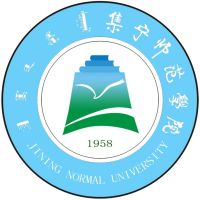Jining Normal University is located in Ulanqab City, Inner Mongolia Autonomous Region. Ulanqab City is located at the junction of the three major economic circles of Beijing-Tianjin-Hebei, Bohai Rim, and Hohhot-Baotou-Yinyu. It is a hub city in the Eurasian Economic Belt and enjoys the title of "China's potato capital, wind power capital, grassland leather capital, Shenzhou homeland, It has the reputation of "the summer resort capital of China's grassland". The school has a long history and profound cultural heritage. In 1931, the former Suiyuan Province established the Suiyuan Provincial Second Normal School in Jining, marking the beginning of modern teacher education in Ulanqab. In 1958, the State Council approved the establishment of Ulanqab League Normal College. In 1976, the People's Government of the Autonomous Region approved the restoration of Umeng Normal School. After the college entrance examination was resumed in 1977, junior college classes began to be recruited. In 1978, junior college classes were run independently. In 1985, the People's Government of the Autonomous Region approved the establishment of Ulanqab Normal College on the basis of the Ulanqab Normal College class. In 1995, it was renamed Jining Normal College. In 2000, Ulanqab League Normal School and Ulanqab League Mongolian Normal School were merged into Jining Normal College. In 2009, the Ministry of Education approved the establishment of Jining Normal College on the basis of Jining Normal College. In 2013, the school obtained the right to grant bachelor’s degrees. In 2017, the school was officially listed as a pilot school for overall transformation and development in the region by the People's Government of the Inner Mongolia Autonomous Region. In 2021, it was identified as a pilot university for the comprehensive reform of “Three Whole Educations” in the region by the Department of Education of the Inner Mongolia Autonomous Region. In the same year, the school was selected as a national language promotion base. In 2023, the school was approved as the national common language promotion base of the autonomous region. The school has successively won honors such as water-saving universities, garden-style units, and civilized campuses in the Inner Mongolia Autonomous Region. The school currently has three campuses, covering a total area of 1,617 acres and a total construction area of 346,800 square meters. The total value of teaching and scientific research instruments and equipment is 210 million yuan. The library has a collection of 1.5576 million paper books and 1.1 million electronic books. There is an affiliated experimental middle school. There are currently 12,491 full-time students on campus, including 11,636 undergraduates. There are 805 active faculty and staff, including 338 with senior professional titles and 510 with master's and doctorate degrees; 1 enjoys special government allowance from the State Council, 1 young and middle-aged expert with outstanding contributions in the autonomous region, 2 famous teachers at the autonomous region level, and grassland talents 3 people, 10 candidates for the autonomous region's "New Century 321 Talent Project", 1 young innovative talent, 3 young scientific and technological talents, 1 most beautiful scientific and technological worker, and 1 outstanding scientific and technological worker. The school has 19 secondary colleges and offers 34 undergraduate majors. It currently has 1 national-level first-class undergraduate major construction site, 11 autonomous region-level first-class undergraduate major construction sites, 11 autonomous region-level brand majors, and 1 national-level first-class course. , 17 autonomous region-level first-class courses, 15 autonomous region-level quality courses, and 10 autonomous region-level online open courses, including 3 autonomous region-level quality online open courses. The school currently has 7 autonomous region-level teaching teams. It has built 1 Inner Mongolia key research base for philosophy and social sciences, 1 autonomous region Zhulao Chinese Nation Community Consciousness Research Base, 1 autonomous region-level key laboratory, 1 autonomous region university key laboratory, and 1 autonomous region graphene application technology engineering research center. , 1 professional technology transfer service agency of the Autonomous Region Science and Technology Department, 1 enterprise science and technology commissioner workstation of the Autonomous Region Science and Technology Department, 2 autonomous region-level experimental teaching demonstration centers, 1 autonomous region collaborative innovation center collaborative member unit, 5 municipal key laboratories, There are 1 school-level key laboratory and 37 school-level scientific research institutes. Together with the Institute of Chinese Ethnic Theory and Ethnic Policy of the University for Nationalities of China and the Ulanqab Municipal Committee, Ulanqab City has built a strong sense of the Chinese nation community. The research base has initially formed a multi-level scientific research and innovation system at the district, local and school levels. Since it was upgraded to undergraduate level in 2009, school teachers have undertaken 1,466 scientific research projects, including 13 national-level projects, 600 provincial-level projects, 48 municipal-level scientific research projects, 770 school-level scientific research projects, and 35 horizontal projects. Published 3,655 academic papers; published 478 monographs; approved 115 patents; won 1 first prize, 2 second prizes, and 8 third prizes of the Autonomous Region’s Philosophy and Social Sciences Government Award; won the first prize of the Autonomous Region Teaching Achievement Award He won 2 first prizes, 4 second prizes, and 2 third prizes; he won 2 first prizes, 6 second prizes, and 13 third prizes in the first Ulanqab City Government Award for Outstanding Achievements in Philosophy and Social Sciences. "Journal of Jining Normal University" was recognized as one of the first batch of Class A academic journals by the State Administration of Press, Publication, Radio, Film and Television in 2015, and won the first Inner Mongolia University Journal Publishing Quality Award in 2016. Over the years, a total of 1,491 students have passed the National Postgraduate Entrance Examination. The school actively carries out colorful campus culture, technological innovation and entrepreneurship, and college student association culture and art festivals. Students have won many awards in various competitions at all levels, including humanities knowledge competitions, science and technology innovation competitions, and innovation and entrepreneurship competitions. Since its establishment, the school has been based on the border ethnic areas, practiced the school motto of "seeking truth and innovation, and serving as a teacher". It has always served the basic education, economic construction and social development of the border ethnic areas, and has trained more than 90,000 people who are "decent and capable". All kinds of talents who can be retained, used and work well have made important contributions to the economic and social development, national unity and progress, and border harmony and stability of the country, the autonomous region, especially Ulanqab City, and are known as Ulanqab City. Lanqab is the cradle of basic education, national education and the heart of urban wisdom. Comrade Liu Yunshan wrote an inscription for his alma mater: "Spring and Autumn are full of peaches and plums all over the world, teaching and educating talents are everywhere in the grassland."
-

Tsinghua University
-

Peking University
-

Fudan University
-

Wuhan University
-

Zhejiang University
-

Nanjing University
-

Sun Yat-sen University
-

Tongji University
-

Renmin University of China
-

Jahrom University of Medical Sciences
-

Technological Institute of Tlaxcala Plateau
-

Golfo University
-

Technological University of South Sonora
-

Technological University of Huejotzingo
-

Tizimín Institute of Technology
-

Chilpancingo Institute of Technology
-

Technological Institute of Boca del Rio
-
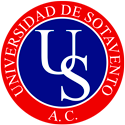
University of Sotavento
-
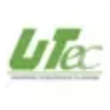
Technological University of Tulancingo
-
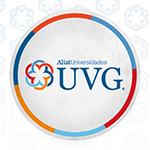
Valle del Grijalva University
-

Technological University of Nezahualcoyotl
-
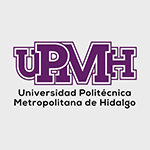
Metropolitan Polytechnic University of Hidalgo
-
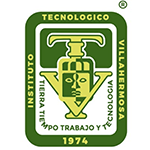
Villahermosa Institute of Technology
-
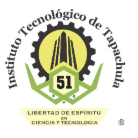
Instituto Tecnologico de Tapachula
-
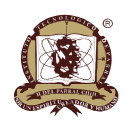
Technological Institute of Parral

